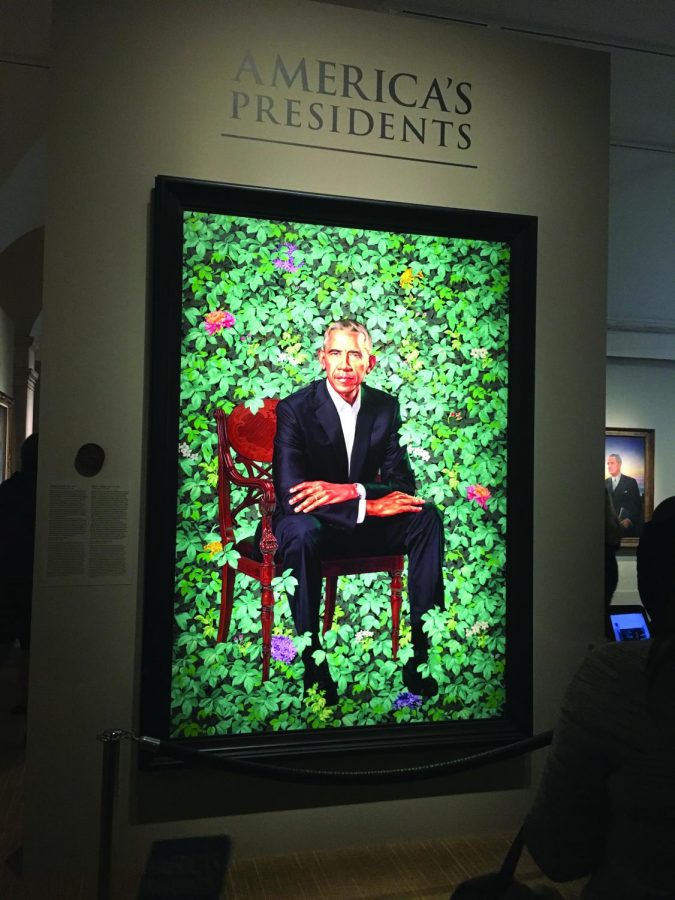Ba-rockin’ portraits
WASHINGTON—Everytime we opened our Twitter apps following the National Portrait Gallery’s release of the official portraits of former President Barack Obama (painted by Kehinde Wiley) and former First Lady Michelle Obama (painted by Amy Sherald) this past February, the only thing we saw were reactions to the portraits. After seeing all of the various comments about the portraits, we decided to take a look at the paintings ourselves.
President Obama’s portrait stuck out to us from all the 43 presidential portraits, and that wasn’t just because there was a line going down the whole gallery to take pictures with it. Wiley’s painting shows the former president sitting on a chair in front of a leafy green background. He is surrounded by flowers that symbolize the different aspects of his life: blue Kenyan irises to represent his Kenyan heritage; Hawaiian jasmine to represent his birthplace; and chrysanthemums, the official flower of Chicago, where his political career was launched.
Sherald uses gray shades and tones for Michelle Obama’s skin color to represent 19th- and 20th-century photos of African-Americans that were printed on black and white film. The colors used for the background and the former first lady’s dress are in fairly pale tones.
There were a variety of reactions in the days following the portraits’ reveal. People were taking to social media stating that Michelle Obama’s portrait doesn’t look anything like her and that Barack Obama’s doesn’t look very presidential because of the dramatized colors used by Wiley.
CNN journalist and political commentator Chris Cillizza said that Michelle Obama’s portrait was underwhelming and wrote in a tweet, “This is a beautiful portrait. It looks very little like Michelle Obama.” We have to agree. The portrait uses a lot of alluring shades and tones, but the facial structure painted just doesn’t match that of the former first lady. Additionally, some of the visitors we met, like Darcey O’Malley, a French teacher at the National Cathedral School in D.C., think that the portrait just isn’t appealing. “The dress is distracting from the whole portrait,” O’Malley said. “I think it is too much.”
Some are defending Sherald’s painting, saying that despite a lack of literal physical resemblance, Michelle Obama’s portrait embodies everything the former first lady stands for. Ryann Berry, an English teacher at the National Cathedral School, told us, “I was struck by her total expression. I think it does look like her, especially with the coloring and the background.”
The uniqueness of Barack Obama’s portrait drew D.C. resident David Waxiwer to the painting. “The colors are very vibrant,” Waxiwer told us. “This portrait doesn’t look ‘presidential’ like the others, which is what I like most about it.”
After seeing the portraits ourselves, we understand the controversy over how Michelle Obama was represented in her painting. Her portrait was dramatic, but it simply did not look like her. We admire the distinctness of Barack Obama’s portrait and the clever way Wiley displayed his life story. All in all, each portrait was intense and rich in its own ways, demonstrating the vibrancy of Barack and Michelle Obama.

